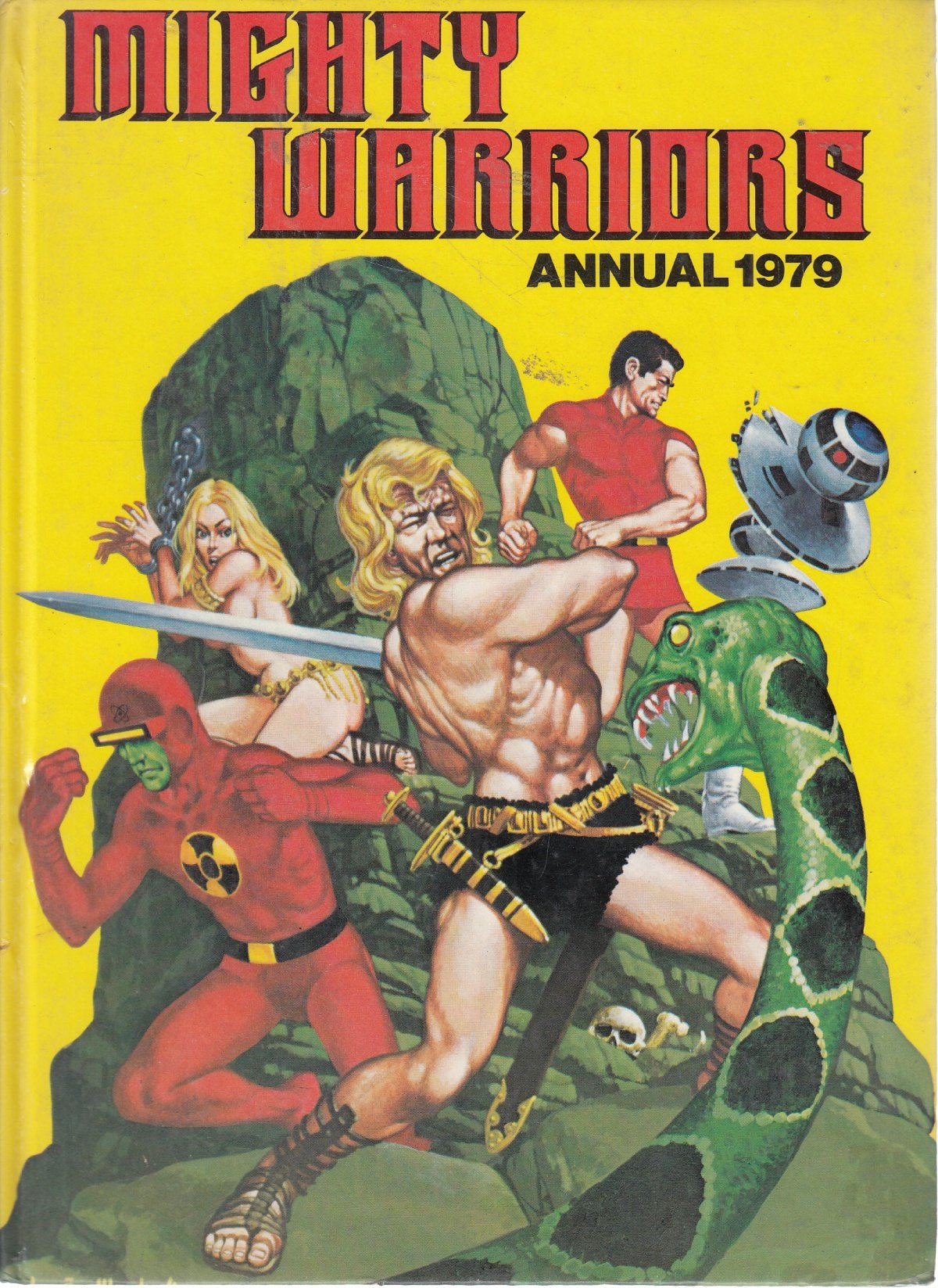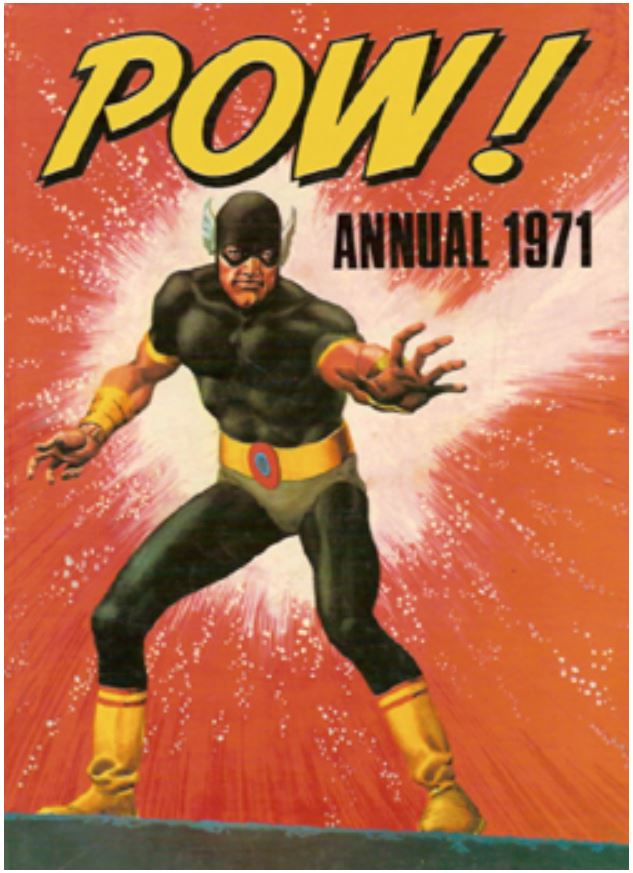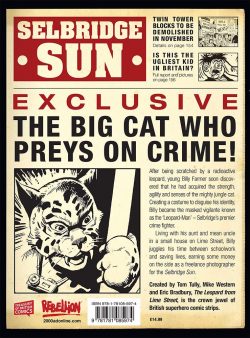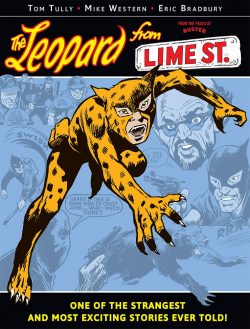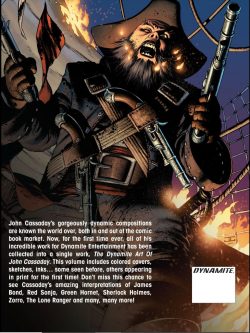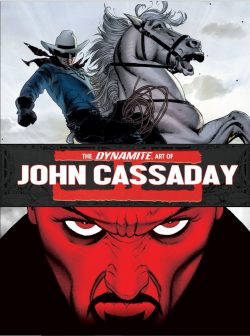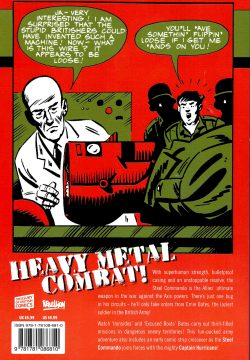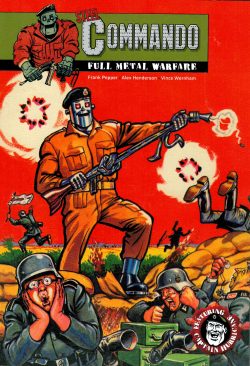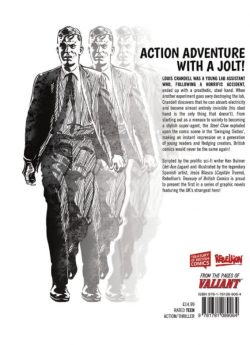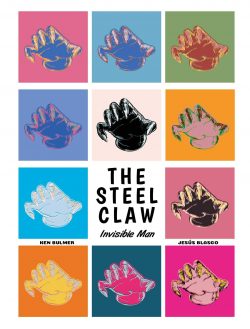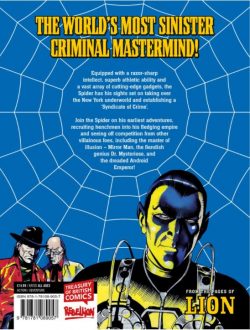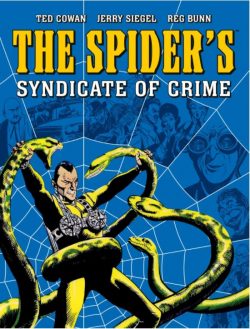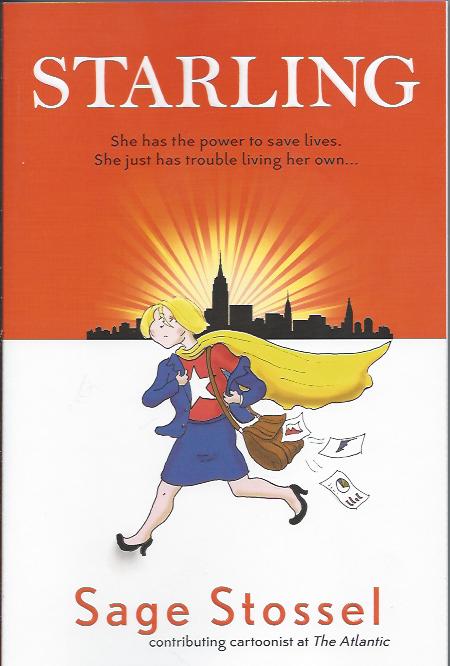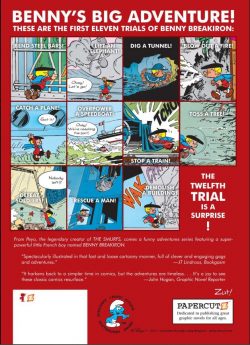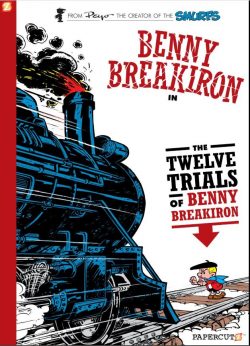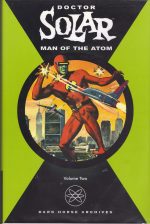

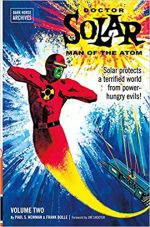
By Paul S. Newman, Frank Bolle, George Wilson & various (Dark Horse Books)
ISBN: 978-1593073275 (HB) 978-1616553241 (TPB)
The comics colossus identified by fans as Dell/Gold Key/Whitman had one of the most complicated publishing set-ups in history, but that didn’t matter one iota to the kids of all ages who consumed their vastly varied product.
Based in Racine, Wisconsin, Whitman had been a crucial part of the monolithic Western Publishing and Lithography Company since 1915, drawing upon commercial resources and industry connections that came with editorial offices on both coasts (and even a subsidiary printing plant in Poughkeepsie, New York).
Another connection was with fellow Western subsidiary K.K. Publications (named for licensing legend Kay Kamen who facilitated extremely lucrative “license to print money†merchandising deals for Walt Disney Studios between 1933 and 1949).
From 1938, Western’s comicbook output was released under a partnership deal with a “pulps†periodical publisher under the umbrella imprint Dell Comics – and again those creative staff and commercial contacts fed into the line-up of the Big Little, Little Golden and Golden Press books for children. This partnership ended in 1962 and Western had to swiftly reinvent its comics division as Gold Key.
As previously stated, Western Publishing had been a major player since comics’ earliest days, blending a huge tranche of licensed titles such as newspaper strip, TV and Disney titles, (like Nancy and Sluggo, Tarzan, or The Lone Ranger) with home-grown hits like Turok, Son of Stone and Space Family Robinson.
In the 1960s, during the camp/superhero boom the original adventure titles expanded to include Brain Boy, M.A.R.S. Patrol, Total War (created by Wally Wood), Magnus, Robot Fighter (by the incredible Russ Manning) and – in deference to the atomic age of heroes – Nukla and another brilliantly cool and understated thermonuclear white knight…
Despite supremely high quality and passionate fan-bases, Western’s pantheon never really captured the media spotlight of DC or Marvel’s costumed cut-ups, and eventually – in 1984 – the West Coast crew closed their comics division, having lost or ceded their licenses to DC Marvel and Charlton.
As a publisher, Gold Key never really “got†the melodramatic, breast-beating, often-mock-heroic Sturm und Drang of superheroes – although for a sadly-dwindling number of us, the understated functionality of Silver Age classics like Magnus, Robot Fighter or remarkably radical concepts of atomic crusader Nukla and even the crime-fighting iterations of classic movie monsters Dracula, Frankenstein and Werewolf were utterly irresistible.
The sheer off-the-wall lunacy of features like Neutro or Dr. Spektor I will save for a future occasion…
The company’s most recognisable and significant stab at a superhero was an understated nuclear age paladin with the rather unwieldy codename of Doctor Solar, Man of the Atom, who debuted in an eponymous title dated October 1962 – Happy Anniversary! – sporting a captivating painted cover by Richard M. Powers that made the whole deal feel like a grown up book rather than a mere comic.
With #3, Frank Wilson took over the iconic painted covers: a glorious feature that made the hero unique amongst his costumed contemporaries…
By the time of this second collection – also available in hardback, but tragically not in any digital editions I know of – Paul S. Newman (A Date With Judy; The Lone Ranger; Turok, Son of Stone; I Love Lucy and literally countless other titles) was the sole writer and Frank Bolle (The Twilight Zone; Boris Karloff’s Tales of Mystery; Flash Gordon; The Heart of Juliet Jones) was providing slick understated visuals for one of the most technically innovative and conceptually spectacular series on the stands…
More factual opinions and inside information can be accessed in the ‘Foreword’ by Jim Shooter (a latter day Solar scribe) – as well as a fond critical appraisal and background on the classics that follow…
The Supreme Science Hero was born when a campaign of sabotage at research base Atom Valley culminates in the death of Dr. Bentley and the accidental transmutation of his lab partner Doctor Solar into a (no longer) human atomic pile with incredible, impossible and apparently unlimited powers and abilities. Of course, his very presence is lethal to all around him…
The nuclear nightmares – from Doctor Solar, Man of the Atom #8-14 (July 1964 to September 1965) – begin with the latest ploy mysterious mastermind Nuro, who wants the monopoly on atomic science. A fiend employing espionage and murder, his current scheme is to use mind-science to destroy his enemies, deploying ‘The Thought Controller’ to create hallucinations and exhaust Solar to the point of expiration. It initially works but Nuru has not reckoned on the devotion of girlfriend Gail Sanders and mentor Dr. Clarkson who help him overcome ‘The Final Challenge’…
Cover-dated October-December, issue #9 revealed how the spy supremo abducts America’s greatest cybernetic innovator and compels him to construct ‘Transivac, the Energy-Consuming Computer’. Rapidly becoming self-aware and autonomous, the monster machine seems easy able to complete its mission and destroy Solar but when it goes berserk even Nuro neds his arch enemy to defeat ‘The Enemy Within’…
Doctor Solar, Man of the Atom #10 (January-February 1965) tells in two parts how a hasty effort to repair the utterly fractured polar ice shelf necessitates the Atomic Adventurer absorbing unimaginable extra energy from our closest star to save humanity. Tragically, the solar overdose turns him into a 100 foot, mega-tonnage colossus and ‘The Sun Giant’ must perform extraordinary energy-consuming feats to reduce himself to human scale…
He’s still not quite there in #11 (March-April) as Nuro strikes again, exploiting the Man of the Atom’s exertions and increasing amnesia to orchestrate ‘The Day Solar Died’. As the hero becomes a growing menace, only a token of love turns back the tide of terror…
Economic catastrophe stems from a sinister plot as ‘The Mystery of the Vanishing Silver’ (#12, May-June) sees Solar working for the Federal government while Nuro’s top henchman Aral Uzbek demonstrates his own appetite for destruction and multi-tasking skills, leading to a shocking new transition for all men of the Atom before order is restored…
Please don’t stop me if you’ve heard this next one…
When ‘The Meteor from 100 Million B.C.’ (#3 July-August) crashes into a swamp and buries itself down deep, hyper-fast evolutionary forces quickly generate waves of monstrous predatory life-forms that demand rapid responses and a pose a momentous moral quandary for Solar, Gail and Clarkson. Ultimately, the stark demands of survival of the fittest make the decision for them…
The epics end for now with #14 (September-October 1965) As Nuro and Uzbek’s latest terror-weapon prompts a full infiltration of Atom Valley and subsequent sabotage of a new reactor. While the Man of the Atom prevents nuclear catastrophe, the radiation alters his composition, giving him an uncontrollable new ability in ‘Solar’s Midas Touch’. Inadvertently changing the atomic structure of anything he touches, the frantic hero is further tested when Nuro’s toy is unleashed for a crucial rocket launch at Cape Kennedy and Solar must find a way to turn misfortune to his advantage…
Rounding out this second tome, a Bonus Section culled from filler pages in issues #15-22 and all colored and retouched by Dan Jackson, examines ‘The Science of Solar’ with peeks into ‘Secrets of Atom Valley’, ‘Birth of a Death Ray’, ‘Security Guard’, and ‘…Her Two Mile “Gun‒, whilst Doctor Solar: Forms of Energy examines ‘Radio Waves’, ‘Light’and ‘Heat’ before class is dismissed following breakdowns of Doctor Solar’s Senses – specifically ‘Touch’ and ‘Hearing’– and a summation of ‘The Five Incredible Senses of the Man of the Atom’…
Augmented by fulsome ‘Biographies’ of the creative personnel, this charismatic collection offers potently underplayed and scientifically astute (as far as the facts of the day were known) adventures blending the best of contemporary movie tropes with the still fresh but burgeoning mythology of the Silver Age superhero boom. Enticingly restrained and understated, these Atom Age action comics offered a compelling counterpoint to the eccentric hyperbole of DC and Marvel and remain some of the most readable thrillers of the era.
These tales are lost gems from a time when fun was paramount and entertainment a mandatory requirement. This is comics the way they were and really should be again…
DOCTOR SOLAR®, MAN OF THE ATOM ARCHIVES Volume 1 ™ and © 2010 Random House, Inc. Under license to Classic Media, LLC. All rights reserved.

